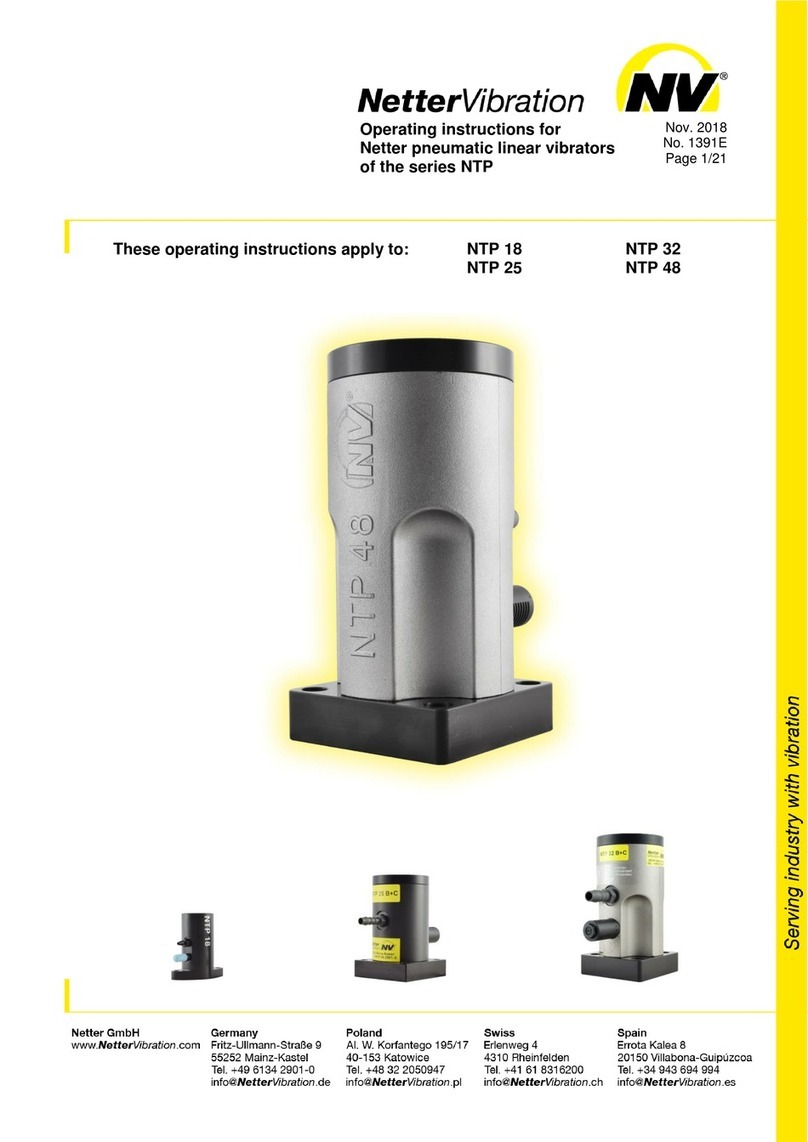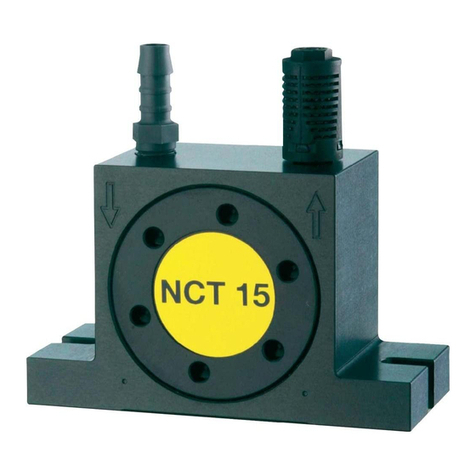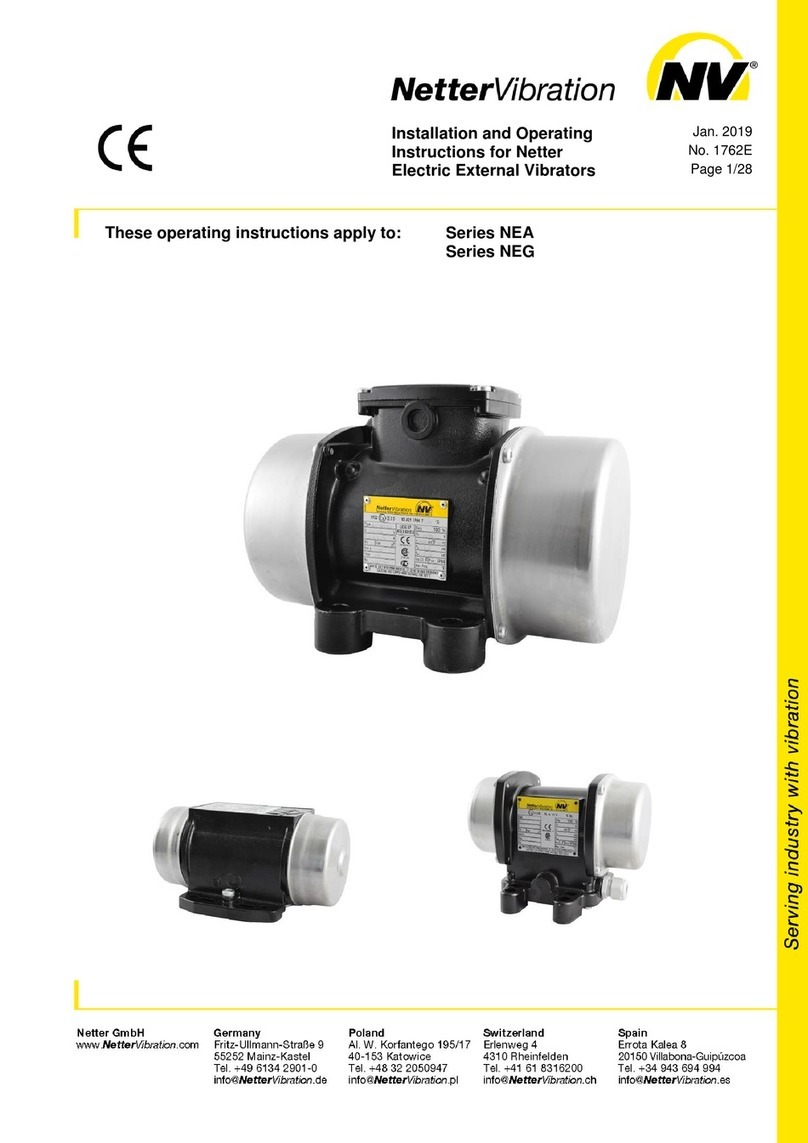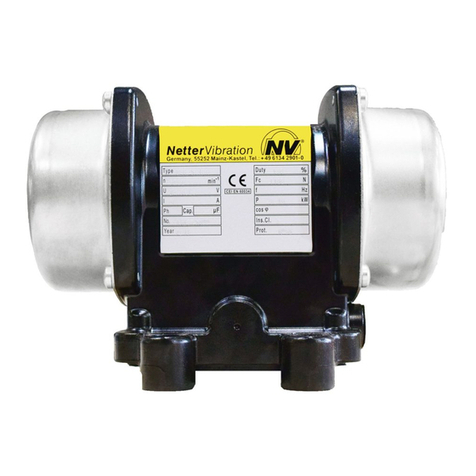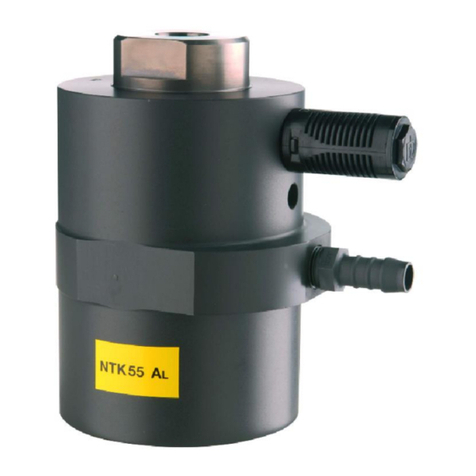
4
Type Hou-
sing
mate-
rial
Working moment Nominal frequency Linear force Air
consumption Noise level
[cmkg] [min-
] [N] [l/min] [dB(A)]
2 bar 4 bar 6 bar 2 bar 4 bar 6 bar 2 bar 4 bar 6 bar 2 bar – 6 bar 2 bar – 6 bar
NTS 100/01* AL 0,33 0,43 0,41 3.920 4.640 5.840 281 513 764 33 – 181 68 – 80
NTS 75/01* AL 1,01 1,31 1,44 2.848 3.596 4.038 451 934 1.291 99 – 442 67 – 81
NTS 50/01* AL 2,18 2,62 2,66 1.924 2.408 2.825 442 834 1.164 88 – 416 76 – 84
NTS 70/02* AL 2,81 2,77 3,04 2.096 2.808 3.336 676 1.186 1.847 128 – 564 76 – 87
NTS 54/02* AL 4,54 5,51 5,07 1.730 2.064 2.544 745 1.288 1.800 152 – 698 80 – 89
NTS 50/04* AL 7,90 9,80 9,70 1.920 2.296 2.672 1.591 2.844 3.789 271 – 977 77 – 86
NTS 21/04 AL 34,90 45,90 49,10 941 1.156 1.334 1.694 3.362 4.786 225 – 718 73 – 83
NTS 50/08* AL 11,30 15,30 17,00 1.977 2.331 2.669 2.426 4.555 6.642 216 – 803 81 – 90
NTS 50/10 GG 14,50 17,90 18,90 1.983 2.392 2.809 3.128 5.626 8.174 454 – 1.647 82 – 92
NTS 30/10 GG 50,00 80,00 96,00 840 1.044 1.300 1.940 4.780 8.900 312 – 1.438 75 – 85
NTS 50/15 GG 25,00 32,70 35,80 1.830 2.209 2.464 4.589 8.754 11.922 726 – 2.108 81 – 91
NTS 50/20 GG 24,70 34,20 37,30 1.823 2.252 2.591 4.511 9.527 13.737 887 – 2.491 81 – 92
NTS 30/20 GG 57,30 84,80 92,60 1.227 1.528 1.759 4.727 10.852 15.693 551 – 2.014 78 – 88
NTS 24/20 GG 94,20 126,60 144,80 936 1.176 1.388 4.515 9.596 15.290 642 – 2.083 75 – 80
NTS 50/40 GG 72,50 93,00 99,50 1.335 1.617 1.920 7.090 13.333 20.114 994 – 3.296 80 – 92
NTS 20/40 GG 218,90 286,70 302,30 827 985 1.147 8.227 15.239 21.808 1.340 – 4.252 77 – 89
These technical data are reference values and may vary in dependence on the application, further data on request.
*) oil free operation possible
Noise level:
The noise level is mainly determined by
the mounting surface (e.g. sheet metal)
the vibrator is mounted on. Depending on
type (with silencer) and an air pressure of
6 bar the noise level is 80-85 dB(A), it is
less if the air pressure is reduced. Sheet
metal without noise insulation amplifies
the noise level.
Duration of operation:
Long operating periods change the
performance data (wear).
Please observe when choosing:
Linear vibrators of type NTS are available in two different designs.
Group 1:
Housing made of aluminium, hard-coated, cover made of plastic,
installed starting spring for horizontal or slightly inclined installation.
(Exception: NTS 21/04 without starting spring).
If advised by application engineers of Netter GmbH and in compliance
with locally specified conditions, these vibrators may be operated
without oil. (Exception: NTS 21/04).
Group 2:
Housing made of steel or continuous casting, surface treated, base
plate made of steel. Connection for starting impulse.
These vibrators and the NTS 21/04 must only be operated with
lubricated compressed air or lubricated nitrogen.
Operation of NTS vibrators requires the installation of a 3/2-way valve to
ensure problem-free starting. This valve also ensures immediate
stopping when switching off. At temperatures ≤10 °C higher starting
pressures (more than 2 bar) may be required.
